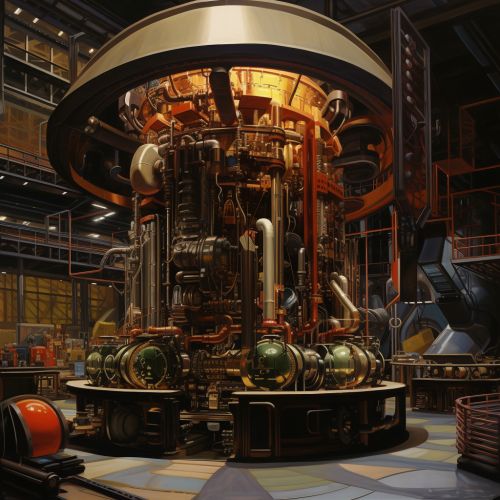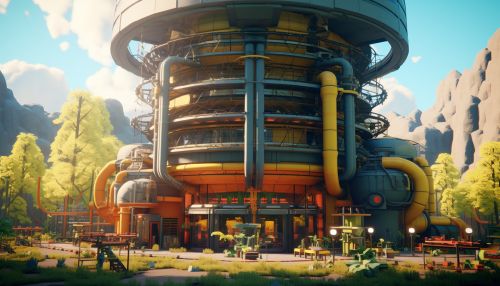Nuclear reactor
Introduction
A nuclear reactor is a device designed to maintain a chain reaction producing a steady flow of neutrons generated by the fission of heavy nuclei. They are, fundamentally, fast neutron reactors and thermal neutron reactors. The most commonly used reactors for nuclear power are thermal reactors that use a moderator to slow down the neutrons produced by nuclear fission.


History
The concept of a nuclear reactor was first realized in 1942 when the first man-made self-sustaining nuclear chain reaction was initiated in CP-1, during an experiment led by Enrico Fermi. In the early 1950s, when the U.S. Atomic Energy Commission authorized the construction of the first prototype nuclear power plant, the technology was quickly adopted and developed around the world.
Design and Construction
The design and construction of a nuclear reactor involve a broad range of engineering disciplines. The reactor core, which contains the fuel and where the reaction takes place, is housed in a reactor vessel. The vessel is designed to withstand high pressure and temperature. It is surrounded by a containment building, which is designed to contain the release of radiation in case of an accident.
Types of Nuclear Reactors
There are several types of nuclear reactors, and they are classified based on different characteristics.
Pressurized Water Reactors (PWR)
Pressurized Water Reactors (PWR) are the most common type of nuclear reactor, making up over 60% of the current world's nuclear reactors. The primary coolant, water, is pumped under high pressure to the reactor core.
Boiling Water Reactors (BWR)
Boiling Water Reactors (BWR) are the second most common type of reactors. Unlike PWRs, in a BWR, the reactor core heats water, which turns to steam and then drives a steam turbine.
Fast Neutron Reactors (FNR)
Fast Neutron Reactors (FNR) are a type of nuclear reactor in which the fission chain reaction is sustained by fast neutrons. They have the potential to produce more usable energy per unit of nuclear fuel than a slow neutron reactor.
Nuclear Fuel Cycle
The nuclear fuel cycle includes all the steps in the use of nuclear fuel: from mining, processing, use in a reactor, chemical reprocessing, and disposal of the final waste. The nuclear fuel cycle starts with the mining of uranium and ends with the disposal of nuclear waste.
Safety and Accidents
Safety is a critical aspect of all stages of nuclear reactor operation, from design and construction to decommissioning. Despite the high safety standards, nuclear accidents have occurred, the most notable being the Chernobyl and Fukushima accidents.
Decommissioning
Decommissioning of a nuclear reactor is the process by which the system is safely retired from service. The process involves the removal of the spent fuel, the dismantling of the reactor, and the safe disposal of the radioactive waste.
